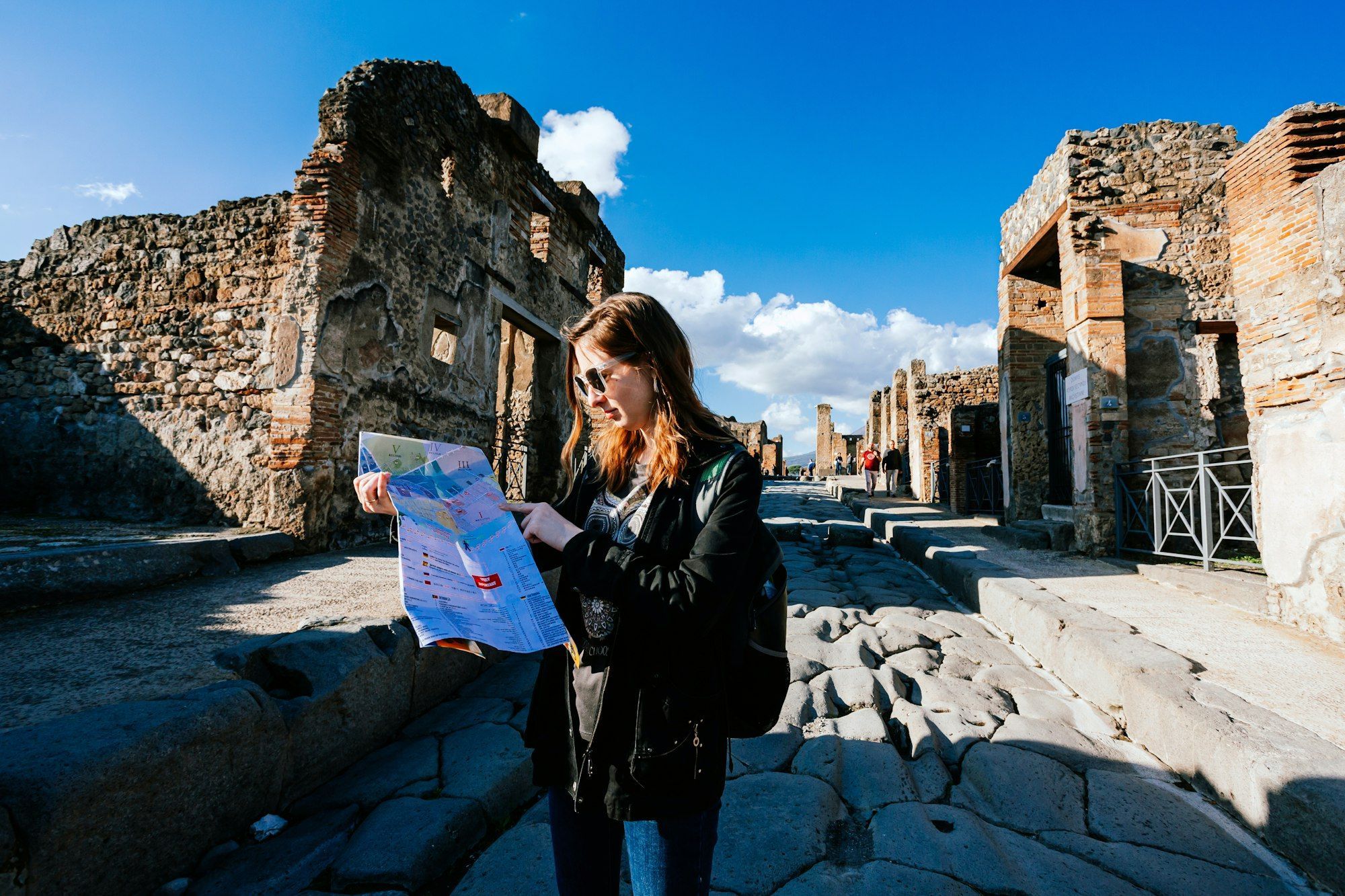Are you planning a trip to Rome in 2024? If so, you might be wondering whether the Roma Pass is worth the investment. In this comprehensive guide, we’ll dive deep into the benefits and value of the Roma Pass, helping you decide if it’s the right choice for your trip. For a detailed review and guide, check out this 2024 review. Let’s explore what the Roma Pass has to offer and how it can enhance your Roman adventure.
What is the Roma Pass?
The Roma Pass is a tourist card designed to help visitors explore Rome more conveniently and cost-effectively. It offers free or discounted entry to many of the city’s top attractions, as well as unlimited use of public transportation. You’ve probably already thought about how much time and money you could save with such a pass, right?
Also to read : Mastering the Experience: Essential Tips for Enjoying a Classic British Village Cricket Match
Types of Roma Passes
There are two main types of Roma Passes available for tourists in 2024:
- 48-Hour Roma Pass: This pass costs €32 and includes free entry to the first museum or archaeological site you visit, discounted entry to subsequent sites, and free public transportation for 48 hours.
- 72-Hour Roma Pass: Priced at €52, this pass offers free entry to the first two museums or archaeological sites, discounted entry to additional sites, and free public transportation for 72 hours.
Choosing the right pass depends on how long you plan to stay in Rome and how many attractions you want to visit. “The Roma Pass is an excellent way to save both time and money while exploring Rome’s rich history and culture,” says travel expert Maria Rossi.
In the same genre : Top Spots for an Unforgettable Guided Tour of the Roman Baths in Bath
Benefits of the Roma Pass
The Roma Pass comes with a range of benefits that can significantly enhance your trip to Rome. Let’s break down the key advantages you’ll enjoy with this pass.
Free Entry to Top Attractions
One of the most significant benefits of the Roma Pass is free entry to some of Rome’s most iconic attractions. With the 48-hour pass, you get free admission to your first museum or archaeological site, while the 72-hour pass offers free entry to the first two sites. This can save you a considerable amount of money, especially if you plan to visit popular sites like the Colosseum, the Roman Forum, and the Palatine Hill.
For example, if you visit the Colosseum with a Roma Pass, you’ll skip the long ticket lines and enjoy a more seamless experience. “Using the Roma Pass at the Colosseum saved us at least an hour of waiting in line,” shares tourist John Smith.
Discounts on Additional Sites
After using your free entries, the Roma Pass still offers value by providing discounted admission to additional museums and archaeological sites. This means you can explore more of Rome’s cultural treasures without breaking the bank. Some of the sites where you can enjoy these discounts include the Capitoline Museums, the National Roman Museum, and the Baths of Caracalla.
Imagine being able to visit multiple museums in a single day, all at a reduced price. It’s a great way to immerse yourself in the city’s history and art without worrying about the cost.
Unlimited Public Transportation
Another major advantage of the Roma Pass is the inclusion of unlimited public transportation. Whether you’re using the metro, buses, trams, or even the urban trains, your Roma Pass has you covered. This can be a game-changer, especially in a city as spread out as Rome.
Consider this scenario: You start your day at the Colosseum, then hop on the metro to visit the Vatican Museums, and later take a bus to the trendy Trastevere neighborhood for dinner. With the Roma Pass, you can move around the city effortlessly and without additional costs.
Value Analysis of the Roma Pass
Now that we’ve covered the benefits, let’s analyze the value of the Roma Pass. Is it really worth the investment? Let’s break it down.
Cost Comparison
To determine if the Roma Pass is a good value, we need to compare its cost to the price of individual tickets for attractions and public transportation. Here’s a table that compares the costs:
| Option | Cost | What’s Included |
|---|---|---|
| 48-Hour Roma Pass | €32 | 1 free entry, discounted entries, free public transportation for 48 hours |
| 72-Hour Roma Pass | €52 | 2 free entries, discounted entries, free public transportation for 72 hours |
| Individual Tickets | Varies | Colosseum: €16, Vatican Museums: €17, Public Transportation: €1.50 per ride |
As you can see, the Roma Pass can quickly pay for itself if you plan to visit multiple attractions and use public transportation frequently. For example, if you visit the Colosseum and the Vatican Museums and use public transportation a few times, you’ll already be saving money with the 48-hour pass.
Break-Even Points
Understanding the break-even points can help you decide if the Roma Pass is right for you. Here’s a detailed list of scenarios where the Roma Pass becomes cost-effective:
- Visiting Multiple Attractions: If you plan to visit at least two major attractions like the Colosseum and the Vatican Museums, the Roma Pass will likely save you money, especially if you also use public transportation.
- Using Public Transportation Extensively: If you’re staying in Rome for a few days and plan to use public transportation frequently, the Roma Pass can be a great deal, as it includes unlimited rides.
- Exploring Lesser-Known Sites: Even if you’re interested in visiting smaller museums or archaeological sites, the discounted entries provided by the Roma Pass can add up to significant savings.
- Short Stay: If you’re only in Rome for a short time (48-72 hours), the Roma Pass can be an excellent way to maximize your experience without worrying about individual ticket costs.
- Convenience and Time-Saving: The Roma Pass not only saves you money but also time, as you can skip ticket lines at major attractions. This can be particularly valuable if you’re on a tight schedule.
“The Roma Pass is a no-brainer if you’re planning to visit multiple sites and use public transportation,” advises travel blogger Anna Bianchi. “It’s all about maximizing your time and money in Rome.”
Real-Life Examples
To illustrate the value of the Roma Pass, let’s look at a few real-life examples of how it can benefit travelers:
Example 1: Family Trip
A family of four visiting Rome for three days can use the 72-hour Roma Pass to save money. They can visit the Colosseum and the Vatican Museums for free, enjoy discounted entries to other sites, and use public transportation without additional costs. This could save them over €100 compared to buying individual tickets.
Example 2: Solo Traveler
A solo traveler staying in Rome for two days can use the 48-hour Roma Pass to visit the Colosseum, enjoy discounted entry to the Capitoline Museums, and use public transportation. This could save them around €20 compared to individual tickets and transportation costs.
Example 3: Art Enthusiast
An art enthusiast visiting Rome for a week can use the 72-hour Roma Pass to visit multiple museums, including the National Roman Museum and the Galleria Borghese, at discounted rates. They can also use public transportation to move between sites, saving both time and money.
Practical Tips for Using the Roma Pass
To make the most of your Roma Pass, here are some practical tips and advice:
Plan Your Itinerary
Before you arrive in Rome, plan your itinerary to maximize the benefits of the Roma Pass. Identify the top attractions you want to visit and consider how you’ll use public transportation to get around. This will help you make the most of your free entries and discounted admissions.
For example, start your day at the Colosseum, then use the metro to visit the Vatican Museums, and end your day with a visit to a smaller museum like the Museo dell’Ara Pacis. This way, you’ll make the most of your time and the Roma Pass.
Understand the Rules
It’s important to understand the rules and limitations of the Roma Pass. For instance, the free entries are only valid for the first one or two sites you visit, depending on the type of pass you have. After that, you’ll need to pay discounted rates for additional sites.
Also, the Roma Pass does not include skip-the-line access at all attractions, so be prepared to wait in line at some sites. However, it does offer priority entry at some locations, which can save you time.
Use the Roma Pass App
The Roma Pass app can be a valuable tool for managing your pass and planning your trip. You can use it to activate your pass, check the validity period, and find information about attractions and public transportation. It’s available for both iOS and Android devices.
By using the app, you can easily keep track of your free entries and discounted visits, ensuring you get the most out of your Roma Pass.
The Roma Pass is a fantastic tool for travelers looking to explore Rome efficiently and cost-effectively. With free entry to top attractions, discounted admissions to additional sites, and unlimited public transportation, it offers significant value for those planning to immerse themselves in the city’s rich history and culture.
Whether you’re a solo traveler, a family, or an art enthusiast, the Roma Pass can enhance your Roman adventure. By understanding its benefits and planning your itinerary wisely, you can make the most of your trip to Rome in 2024.
So, is the Roma Pass worth it? Absolutely, if you’re planning to visit multiple attractions and use public transportation. It’s a smart investment that can save you both time and money, allowing you to focus on enjoying the Eternal City to the fullest.











